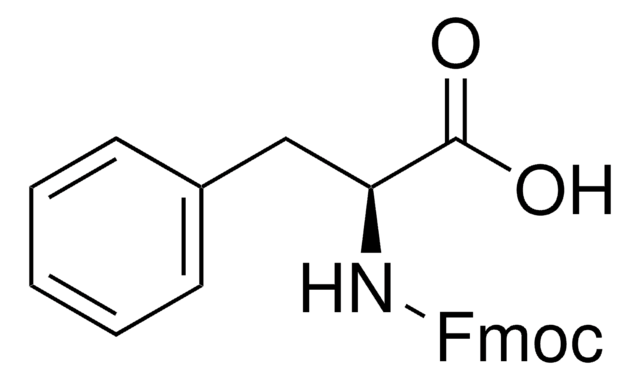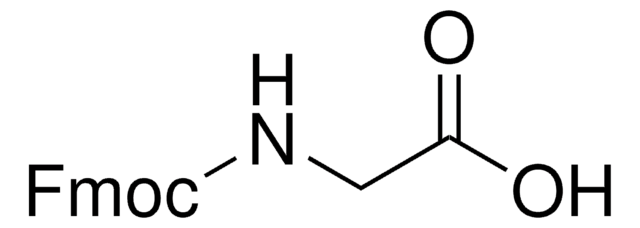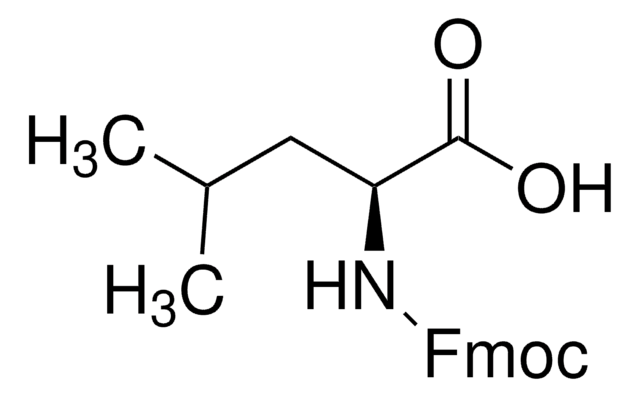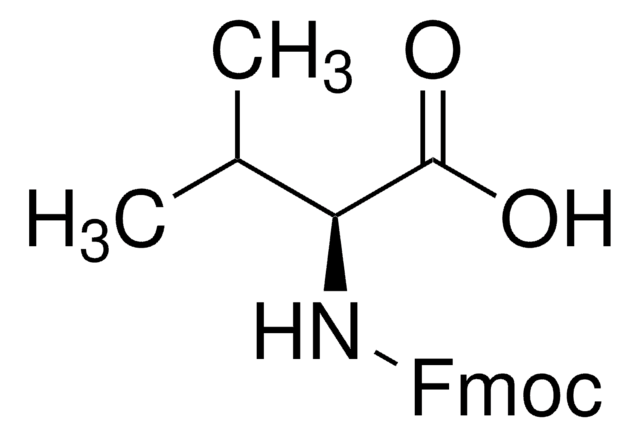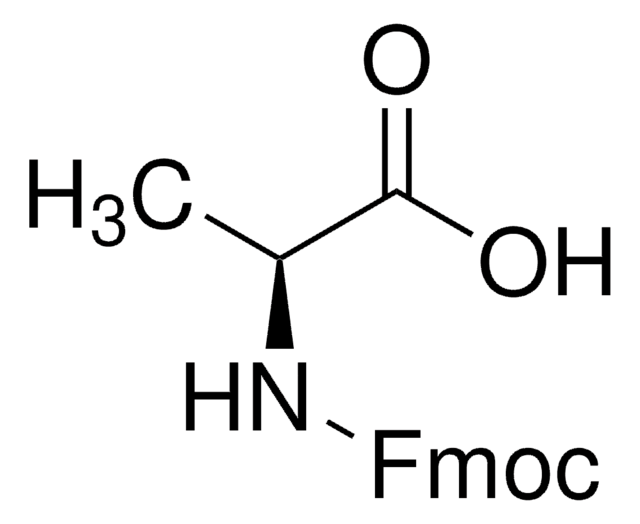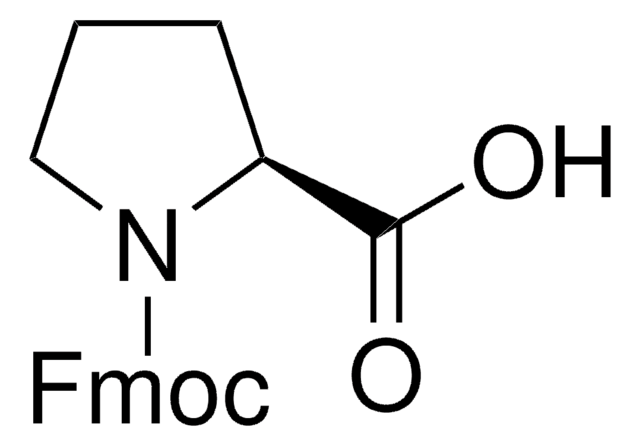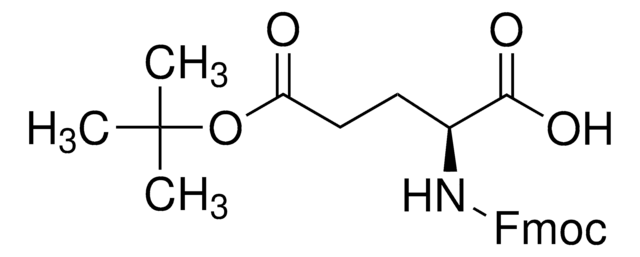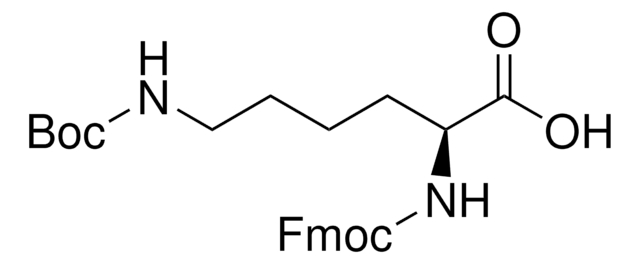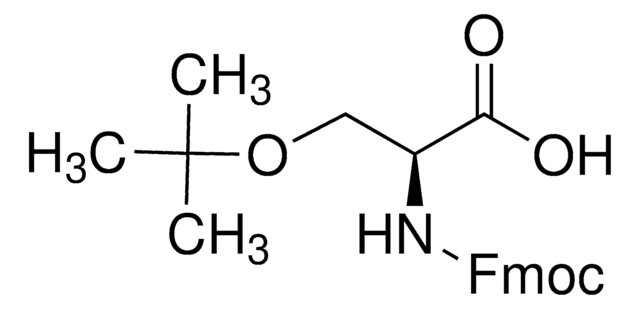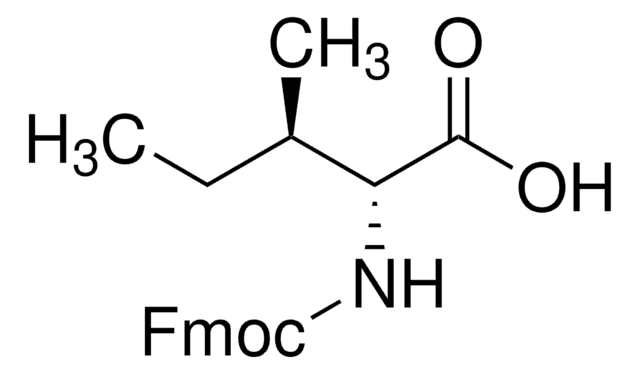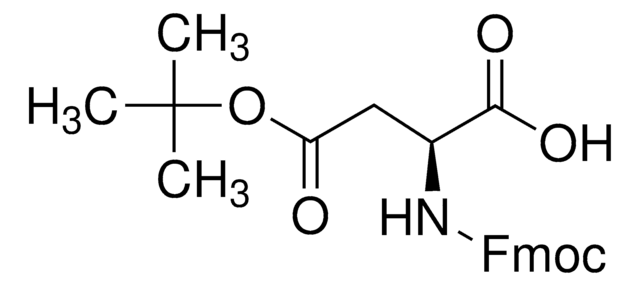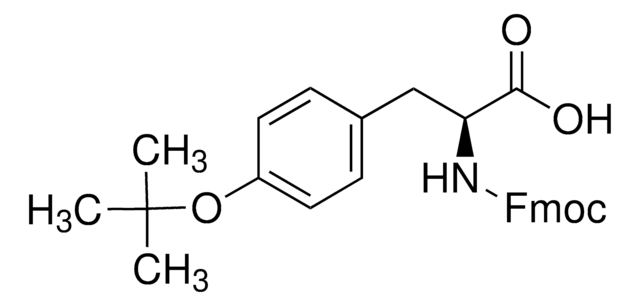Kluczowe dokumenty
47628
Fmoc-Ile-OH
≥98.0% (T)
Synonim(y):
N-(9-Fluorenylmethoxycarbonyl)-L-isoleucine, Fmoc-L-isoleucine
About This Item
Polecane produkty
Próba
≥98.0% (T)
Formularz
solid
aktywność optyczna
[α]20/D −12±1°, c = 1% in DMF
przydatność reakcji
reaction type: C-H Activation
reaction type: Fmoc solid-phase peptide synthesis
reagent type: ligand
reaction type: Peptide Synthesis
mp
145-147 °C (lit.)
Zastosowanie
peptide synthesis
grupa funkcyjna
Fmoc
amine
carboxylic acid
temp. przechowywania
2-8°C
ciąg SMILES
CC[C@H](C)[C@H](NC(=O)OCC1c2ccccc2-c3ccccc13)C(O)=O
InChI
1S/C21H23NO4/c1-3-13(2)19(20(23)24)22-21(25)26-12-18-16-10-6-4-8-14(16)15-9-5-7-11-17(15)18/h4-11,13,18-19H,3,12H2,1-2H3,(H,22,25)(H,23,24)/t13-,19-/m0/s1
Klucz InChI
QXVFEIPAZSXRGM-DJJJIMSYSA-N
Szukasz podobnych produktów? Odwiedź Przewodnik dotyczący porównywania produktów
Powiązane kategorie
Kod klasy składowania
11 - Combustible Solids
Klasa zagrożenia wodnego (WGK)
WGK 3
Temperatura zapłonu (°F)
Not applicable
Temperatura zapłonu (°C)
Not applicable
Środki ochrony indywidualnej
Eyeshields, Gloves, type N95 (US)
Wybierz jedną z najnowszych wersji:
Masz już ten produkt?
Dokumenty związane z niedawno zakupionymi produktami zostały zamieszczone w Bibliotece dokumentów.
Klienci oglądali również te produkty
Produkty
With a growing peptide drug market the fast, reliable and uncomplicated synthesis of peptides is of paramount importance.
Nasz zespół naukowców ma doświadczenie we wszystkich obszarach badań, w tym w naukach przyrodniczych, materiałoznawstwie, syntezie chemicznej, chromatografii, analityce i wielu innych dziedzinach.
Skontaktuj się z zespołem ds. pomocy technicznej